Making Maternity Magic: Empowering Women, Staying Profitable, and Nurturing Creativity in Photography with Karli Braaten
Are you an aspiring maternity photographer? Curious to learn everything that’s involved in this unique and multi-faceted photography niche? Then you’ve come to the right place! Maternity photography is so special in that it requires all the skills of a photographer plus even more care and attention to make your clients feel at ease and look their best.
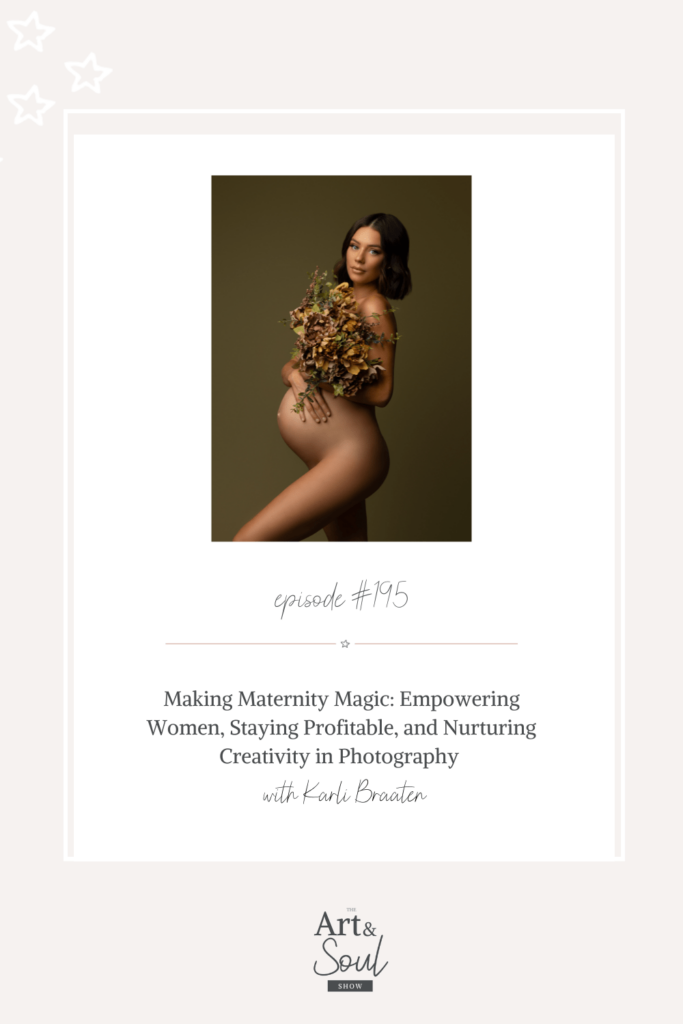
Today, I’m discussing this exact topic with professional maternity photographer, Karli Braaten of Studio Evergreen. Karli knows better than anyone what it takes to make women feel comfortable in their skin, how to direct their poses with confidence, and other strategies for creating stunning images (hint: when it comes to dresses and props, sometimes less is more)! Plus, Karli and I cover common challenges and struggles of every photographer in this rewarding, and sometimes, demanding profession. If maternity photography has ever piqued your interest, then listen in to hear all of Karli’s strategies for success!
So, get cozy, grab your notebooks, and tune in. I’m rooting for you, my friends.
What’s in this episode:
- [04:26] How you can make your clients feel comfortable as a maternity photographer
- [11:54] Why it’s important to direct your clients’ poses and strategies to help you do it
- [17:06] Balancing efficient client management with room to be creative and versatile
- [24:38] Communicating clear expectations and healthy boundaries with your brand
- [28:18] Establishing and sticking to a budget as a new or seasoned photographer
- [38:27] Prioritizing self-care and well-being to avoid burnout in a demanding profession
Tune in to this episode for how you can be successful as a maternity photographer.
SUBSCRIBE: Apple Podcasts | Spotify
Resources Mentioned
Meet Karli
Karli Braaten is a dedicated photographer who has been on a remarkable photographic journey, expertly documenting the beauty of pregnancy and the precious moments of newborns since 2012. Her passion for capturing the unique glow and emotions that come with pregnancy is at the heart of her work, making her a sought-after maternity photographer.
Karli specializes in belly-to-baby photography, ensuring that each stage of this remarkable journey is preserved in a timeless and enchanting manner. Her artistry has not gone unnoticed, as her work has been prominently featured in various esteemed publications, leaving a lasting impact on her audience.
Beyond her photographic talents, Karli is an esteemed educator in the field of photography, with a particular emphasis on optimizing session efficiency and creating a diverse array of captivating images. Her deep love for celebrating the beauty of pregnancy and the joy of welcoming a new life into the world shines through in every frame she captures, making her a trusted name in the world of maternity and newborn photography.
Connect with Karli
Did this episode provide you with valuable lessons for your maternity photography business? Check out this episode The Luxury Fine Art Studio with Joanna Booth from Sanguine Portraiture that offers you even more insight on finding alignment in your business!
Transcript
[00:00:00] Lisa DiGeso: We don’t get into the industry to be business owners. We get into the industry because we love artwork and we love capturing these moments for our clients. And of course, we want to give that. All right. I have 52 dresses in my client closet and she looks beautiful in all of them. Of course, I’m going to want her to wear all 52 of them. But of course, that’s not efficient for us and it’s a little overwhelming for them. And when it comes down to it, you know, we’re trying to create a Mona Lisa for someone and you don’t want 52 Mona Lisas. [00:00:29][28.9]
[00:00:33] Lisa DiGeso: Welcome to the Art and Soul Show where we dive into heart opening chats on photography, business life and that messy in between. I’m your host, Lisa DiGeso a mom, a photographer and entrepreneur, and I’ll be sharing honest conversations and advice for photographers with insight on mindset, entrepreneurship and creativity. The goal of this podcast is for you to be able to gain insights and strategies that will get you real results. Because let’s face it, having a photography business can be lonely, but it doesn’t have to be. This is the place you can go when you need a boost of encouragement, a kick in the pants and inspiration to pick up your camera. This is the Art and Soul Show. [00:01:15][42.3]
[00:01:15] Lisa DiGeso: Hello, beautiful friends. Welcome back to the show today. I am so excited to dive in today’s conversation with Karli Braaten. Carly is a dedicated photographer who has been on a remarkable photographic journey, expertly documenting the beauty of pregnancy and the precious moments of newborns since 2012. Her passion for capturing the unique glow and emotions that come with pregnancy is at the heart of her work, making her a sought after maternity photographer. She specializes in belly to baby photography, ensuring that each stage of this remarkable journey is preserved in a timeless and enchanting manner. Her artistry has not gone unnoticed, as her work has been prominently featured in various esteemed publications, leaving a lasting impact on her audience. Beyond her photographic talents, Carly is an esteemed educator in the field of photography, with a particular emphasis on optimizing session efficiency and creating a diverse array of captivating images. Her deep love for celebrating the beauty of pregnancy and the joy of welcoming a new life into the world shines through every frame she captures, making her a trusted name in the world of maternity and newborn photography. My friends, I am so excited to dive into this conversation. So without further ado, here’s Carly. Welcome. [00:02:30][74.9]
[00:02:31] Karli Braaten: Hi. Thank you. Well, thank you for the work of those that did. [00:02:36][4.8]
[00:02:36] Lisa DiGeso: So tell us who you are and like what you’re super passionate about. [00:02:39][3.0]
[00:02:40] Karli Braaten: All right. Hi, everyone. My name is Karli Braaten, and I am a maternity photographer and newborn photographer here located in Washington State, the beautiful Evergreen State, which is what my business name is named after Studio Evergreen. I am a connoisseur of the belly. I am a baby whisperer. And I love all things that have to do with maternity and newborn photography. [00:03:03][22.7]
[00:03:04] Lisa DiGeso: I love that. So how did you find your love for maturity in Newborn? Like, how did you get started in that? [00:03:09][5.3]
[00:03:10] Karli Braaten: Well, like most of us, it was with the birth of my child. I feel like 90% of newborn photographers start with our own children. I did dabble in it a little bit right out of high school, actually, but I was not very good and I was very nervous to touch the babies. So my when my son was born, I realized, okay, they’re not as breakable as we think, and it’s okay to trust them and to wrap them. And I figured out all the techniques just by being a mom, which is what most of us do. So I started on in my living room, actually off of couch cushions and natural light and finding things from Target or, you know, from Goodwill, which is a big one. And didn’t even know that there was a whole industry on props, which it wasn’t that big back then, but it was amazing. And I started from the ground up and I did friends, babies and neighbors, babies. And I put ads out on moms groups and it just kind of flourished from there. And I found this love for it from a very young age, too, but just photography in general. But I’ve been very blessed to have captured I think I’m almost at 400 babies now, which is wonderful and, well, more pregnancies than that. [00:04:25][75.7]
[00:04:26] Lisa DiGeso: I love that. So you really dial in, especially with maternity photography. So can you share maybe your approach of capturing that essence of that is so uniquely your work in your photography and how you work with clients to get that out of them too? [00:04:43][16.7]
[00:04:44] Karli Braaten: Yes, absolutely. The artistry of maternity is something very, very special. It goes beyond just a normal portrait because you have to make sure that your subject is, first off, comfortable with you even taking photographs of them. And when you’re pregnant, I’m sure all of us can attest to this. It is extremely difficult to feel comfortable in your own skin. Yes. So that’s my first thing. When moms walk through the door, I want to make sure that they know who I am. They’ve read the blog post to help them get prepared, because most of the time a woman who comes into the studio for the first time has never had a professional shoot before. And if they did, then maybe it was outdoors or couples or Christmas. But it was never to the intimate level that we get into for 2 hours, you know, with me in my studio. So I think the. First and foremost thing is comfortability with women, just making sure that they know that they’re in a safe space, that they’re with somebody that is going to empower them, that is going to bring out the best in them, and that is not going to judge them for whatever they may be going through. So I think that connection is most important with the moms and then also having a really deep knowledge of how photography works, how a different angles make a huge difference with, you know, the way that we see ourselves and the way the camera sees. And also the creative editing style is a huge part of it too, and making sure that you’re creating unique pieces of artwork for each pose that you’re doing. But all of that, while maintaining a good business structure and staying in a good process, is a very hard balance to deal with. So that’s something that I really try to strive for as an artist, not just be an artist, but to also make sure that, you know, we’re taking care of business too. [00:06:30][106.0]
[00:06:30] Lisa DiGeso: I know it’s such that tricky balance of trying to be like not only efficient with your time, but also like creatively free, because creatively free takes a little like it takes a little longer sometimes, and you’re just kind of like adjusting and planning and yeah, so I definitely I’ve, I have experienced that too myself. So when it comes to making your clients feel comfortable, I have to ask, what did you do before you were a photographer? Because I sometimes wonder if that comes into play with how we approach our photography. [00:07:01][31.3]
[00:07:03] Karli Braaten: You know, that’s actually funny because I sometimes think about that to customer service for years. Yeah, that’s number one. And then secondly, medical. I worked in a hospital and in a clinic for a long time and, well, to be completely honest, I started photography career right out of high school, so I knew that was what I wanted to do full time. But then throughout the medical career I thought, okay, this will be my full time job and then I’ll be a photographer on the side. And that worked out for, you know, a short period of time. But I think connecting with patients was a really big part of it because you never know what they’re going through. And a lot of times people are very embarrassed to be going to the doctor to the hospital for various number of reasons. But I think it’s really important to show all people kind of respect, no matter what stage of life or walk of life or whatever they’re doing. And so I definitely believe that that background helped quite a bit with with that and also childcare. I worked in childcare for a while to see the house with the kids. [00:07:59][56.6]
[00:08:00] Lisa DiGeso: Totally. [00:08:00][0.0]
[00:08:00] Karli Braaten: Knowing that they need to be silly and, you know, comfortable with you as a person as well. [00:08:04][3.5]
[00:08:04] Lisa DiGeso: Completely. Well, I think even having the medical background approach and probably dealing with, you know, nude or seminude clients too, there’s definitely more of a level of comfortability with people when you have had that experience. I used to be an institution, so it would be like, Hi, I’m Lisa, it’s time for you. You’re like wax and Brazilian. So or like, just get naked. I’m going to give you a massage. Like, so when I started approaching my photography business, I was like, Oh yeah, of course you’re going to do some nude or nude, right? Like, we’re cool. I’m cool. I think if I hadn’t had that experience and my comfortability level and the reason I asked this is if this was actually a question that we had an email about, and I was like, That is so interesting because I forget that not everybody comes from that same level of approach with dealing with people, not only with customer service or just their past experience of being with with nude or seminude body. [00:08:53][49.3]
[00:08:54] Karli Braaten: Yes, this is this is a great question. So as a mother myself, too, I struggled with body positivity throughout both of my pregnancies, with my kids. And so I know firsthand how it feels when your body is changing. Everything is stretching and it’s weird and wonderful, but at the same time, it’s so hard to take that step in front of a camera and trust the person on the other end of the lens that they’ve got you, that they know what angles are going to look best, that, you know, maybe your chin is slightly tilted too much to where you could see up your nose. All of those small, very fine details play a huge role into it. But I think the most important thing is to show moms the back of the camera. I know that some photographers are a little bit weird about this, but I. [00:09:42][47.9]
[00:09:43] Lisa DiGeso: Love it. [00:09:43][0.3]
[00:09:43] Karli Braaten: Huge about it. I think it’s so important to show them like, Hey, this is a Rafael, but look how good you look and hype them up the whole time of the session and just give them the compliments that they probably don’t hear on a day to day basis. I’m totally not calling out the husbands, but typically that’s a girl compliment. You know, you’re going to hear that from your customers or your colleagues or your girlfriends, and sometimes it isn’t said enough. So when you hear it from the professional that is creating the artwork and say you are a subject worth capturing for me, I am intrigued. And you that says wonders. Because imagine, you know, if I guess Picasso probably isn’t a good a guy, but an artist, a very famous artist, you know, came up to someone and said, You, I want to I want to to capture you in my. Artwork I want to paint. You want to canvas? You have to be in my art studio. Then for them, that’s such a huge booster for them emotionally. So I feel the same way. I’m like, you know, you’re going to be on a canvas, you’re going to be on display in my studio, you’re going to be on display in your own home. And that’s the biggest compliment anyone could receive is to to perceive themself as beauty and art, which they are. It’s such an important time of their life. And everyone deserves to be, you know, pampered in that way. [00:11:01][78.2]
[00:11:02] Lisa DiGeso: Absolutely. Now, showing the client the back of the camera is so beneficial. And part of the reason is, is because if they aren’t loving what they’re seeing, even though you might be, they can point it out right in the session. So you can start tweaking your session right away versus, you know, sending that whole gallery back and them being like, you know what, Actually, I like taking selfies from the left. And I probably should tell you that because you’ve taken every photo from the right side. Exactly right. So that’s having those conversations and like not holding those images, I don’t want to say hostage, but being able to show them during the session is so, so beneficial to like not having that negative feedback later. Now, have you had a situation where you have had a client not love their images after their session, and how did you deal with it if you’ve had it? [00:11:53][51.5]
[00:11:54] Karli Braaten: I have. It hasn’t been recently. I would say it was in the beginning, years before I knew a whole lot of posing. Yeah, and I’ll segway really quickly into why I’m such a nerd about posing. Yeah, because the number one comment I used to get when I was doing outdoor photography and starting in the studio with just maternity in general, I was a little bit scared of pregnant moms, even though I was one myself at the time. Being able to direct them was really hard. So I think the number one feedback that I’ve gotten is my posing is way too similar and I’ve actually said this to my students, and I also tell it to moms too. When I first started, I would tell moms, okay, so with maternity photography, there’s only really one pose. It’s one hand on top and one hand on the bottom, and you pop your knee like this, and that’s really it. Like, I want to do a whole lot of variation. So I think a lot of it would be repetitiveness. Yeah. So that that was my number one complaint would be repetitiveness, and then the second one would probably be the facial expressions. Yeah. Which I do go over that in my classes as well, because if a mom doesn’t really see what she’s doing and she thinks that the duck lips look good, but you know, that’s the millennial way to be. But if you don’t instruct them properly. So back in the early days I was like, okay, you just pose naturally, or I would say a lot of arms and eyes and, well, how, how do you usually take your selfies when we’re the expert? And so I think just having some sense of strategy for one, and also a sense of just professionalism, you know what you’re doing, you know how to direct your clients and you also have a whole arsenal behind you in order to, you know, because you’re the person that is supposed to know what to do. So I would say that is the biggest complaint is not having an upper hand in my sessions and kind of letting it be client driven versus professional driven completely. [00:13:51][116.9]
[00:13:52] Lisa DiGeso: For me, I was the exact same way when I was first starting. It was literally one hand went over, one hand under, and I think it must have been a creative life like back in like 2011 or something. And I think it may have been super nice. I can’t quite remember. But I remember watching a video about transitional posing and like always, like just keeping the client moving and like running their hand over their body in the end. And you’re just kind of like unmasking machine gun it, because you’re obviously you’re just taking a lot of photos very quickly. So you’re changing up the look very, very, very quickly. [00:14:22][30.3]
[00:14:23] Karli Braaten: Right? Absolutely. And that’s so important because I’ve watched students during one on ones where they’re like, I’m like, I’m just going to assess you and see what you’re doing. And the number one thing that photographers do is they do a post, then the like, they look back at me, they’re like, you know, expecting like, what do I do next? And that’s so difficult because, you know, we we start off just wanting to capture art and lighting itself is a hard enough feat, which is totally true. Right? But then the whole other aspect is knowing how to pose her clients and how to direct them to and to like the not the most uncomfortable, you know, things. So what I actually do now is I actually pose myself with my clients. So if there’s any behind the scenes videos or pictures of me on the Internet, it’s with one leg popped or I’m on the floor with them, like laying on the floor then I’m like, Stay right there, and then I’ll get up and shoot it. So I think moving with direction, leading by example is something that clients love. They love seeing it because they just mirror and and that’s so easy for them. They feel like they’re not the only one in the room doing it. And it is a big benefit. [00:15:31][68.1]
[00:15:32] Lisa DiGeso: Sessions completely. You know what I just about almost. But it was one of those like silicon bellies off of the internet. [00:15:36][4.1]
[00:15:38] Lisa DiGeso: Like, I just ordered one from Amazon, and I’m like, I don’t know. So, like, a few years ago, oh, my gosh, my husband, he walked into the bathroom and I was in the shower and I had the shower thing open. And I’m like, looking at myself in the bathroom. I’m like maternity posing. And he’s like, What are you doing? I was like, Who’s practicing? [00:15:54][16.3]
[00:15:55] Karli Braaten: Yep, that’s a perfect way to do it. That’s what I do, too. And I do that in my mirrors. I do it for my behind the scenes videos. Like everything I do is all practice for posing. And if there’s a new trend around, like there was a really big trend I think about two years ago now, I think his name is Gary, where he it was the hanging shot where the woman is hanging in the white curtain and she’s hands back. I no kidding. I went and I bought a curtain essentially like, you know, chiffon piece, tied it up, and I just laid in it like, how do clients get in and out of this? I have no idea. I’m going to do it myself. I’m not pregnant. So I know they’re they’re going to have a whole lot harder time than I am. But you did. You have to experience it yourself in order to to direct your clients. So I think that, you know, leading by example and also just practicing alone when you’re not in front of people is going to help you in the long run. So much more. [00:16:48][52.7]
[00:16:49] Lisa DiGeso: Yeah, Yeah. And even like going over all of your like everything when you are calling and just going over, I can see when I made that change here, what was my direction that I gave? Mm hmm. So, and mentally remembering what you’ve done so you can, like, just keep that in your arsenal. So keep, like, teaching yourself how to be better. [00:17:06][17.0]
[00:17:06] Karli Braaten: Yeah. [00:17:06][0.0]
[00:17:06] Lisa DiGeso: Yeah. I love it. Okay. I want to talk a little bit about efficiency and managing your photoshoots. So how many do you have a client closet, number one. And if you do, how many outfits and outfit changes do you permit for your clients and how do you keep it efficient? [00:17:23][17.1]
[00:17:24] Karli Braaten: Yeah, absolutely. This is a great question. So I do have a client closet and we have more backdrops than dresses. I think that right now I have about 50 different fabric backdrops. That is including some kid stuff. But, you know, we have a lot of stuff between silks and gowns and body suits like a lot of people when they first come to the website, when they’re picking which dresses to go for, they’re like, whoa, this is overwhelming. You have a lot of stuff. Yeah, I really just want this. And they’ll send me like, you know, one of my images for my Instagram or something. And so my process is and this is really helpful is I have a client management system. I’m going to shout them out because they’re amazing. It is Studio Ninja and that I’ve been using them for about three years now in there. I’ve curated a questionnaire, a contract as well. And then, you know, of course, a processing system too. But the questionnaire is the number one thing that has helped me prepare my clients and prepare myself as well for what to expect. They can do one of two things. They get an access link to an online gallery with all of the gowns and the backdrops that we have. They can pick through there and they’re numbered one through 100 or whatever it may be, four dresses. And same with backdrops. I tell them, just pick your top three, because typically in a full session, I love the number three. I love doing three unique, different poses in each dress, three different dresses, and then maybe three special things where it may be a set, a silk, and then something more unique, like using a papasan or something. [00:18:59][95.0]
[00:19:00] Lisa DiGeso: Yeah. [00:19:00][0.0]
[00:19:01] Karli Braaten: The client closet, though, is so important because it gives them an idea of what we do have. And I always tell moms I shop around for one size fits all as well to make sure everybody can fit, no matter what your size. If it’s too big and you will clamp it because we’re not looking at your backside. And that’s why socks are amazing, because they truly are one size fits everybody. And you can use a silk in so many numerous of ways, but I think a little bit off topic. So the client management system is wonderful because they can pick through usually their top three of each backdrop in each dress and each silk. And then we’ll, you know, we’ll utilize that. And I have a whiteboard that I use, I’ll write it down. This is their favorites. They really love this look, this style, you know, editorial or they like the more fine arts or whatever it may be. But I’m also super open to being spontaneous during the sessions because, again, it’s artwork like you can have processing and you can be very diligent. But when it comes down to it, if there’s an inspiration during the session, I’m not going to say, Well, we’ve met our three backdrops, I’m sorry. So I do not have a limit on what my clients use. But instead I try to tell them, make sure that the backdrops that you’re picking match together. That way, if they’re on your walls or they’re in an album, they can mesh together to create a cohesive look. Because if you use lime green, which is not a color that I shoot and dark purple, they probably won’t go together unless it’s a Halloween costume. So I also tried to keep pieces in my client closet that would be cohesive with every other piece in the client closet. So lots of neutral tones, lots of earthy tones. Being able to have things that match my brand work really well because my brand as a whole is pretty cohesive. So I would say that the the processing though, and keeping efficient, the most important thing is to stay on the same backdrop until you’re done with that backdrop, because I don’t know if anyone else has this issue, but when I first started out, I would put a backdrop up, you know, it takes like 2 minutes, 5 minutes if you’re without a helper and then you shoot to shoot and you’re like, okay, I’m going to go to this idea and I’m a squirrel, and I go to another idea and then I do two shots. I’m like, Oh, shoot, I forgot to do the the silk sequence on this backdrop that I just talked out. So then I had to put the backdrop up again. So I would say, make sure when you are done with a backdrop and you’re ready to move on to the next one, make sure that you are finished checking off everything that’s on your whiteboard or on your check off list because you want to make sure that you’re running your session smoothly and you don’t want to waste time, precious time with, you know, putting backdrops up and down, up and down. So I would say that’s the number one thing with processing during sessions, is making sure you kind of keep it streamlined as much as you can, but also being creative and artistic. Yeah. [00:21:48][167.2]
[00:21:49] Lisa DiGeso: I think my biggest struggle right now I’m on a sabbatical from taking clients, but I think my biggest struggle, I would get so excited with maternity sessions that I would pull out. I never really let my clients pick. I kind of would design it. So everything went together. Mm hmm. I had a hard time limiting it to under ten outfit changes in both. Indoor and outdoor. So my sessions were usually about 3 hours long. [00:22:12][22.3]
[00:22:12] Karli Braaten: Wow. [00:22:12][0.0]
[00:22:13] Lisa DiGeso: And we would shoot so many images. I would have so many setups, and my galleries were just so massive. Yeah, I’m just like. But then when it came to calling it editing, I would feel so overwhelmed because I had overshot and overdone it. And so I kind of just got myself into this like really resentful place with my photography clients when it was my own fault. I’m like, over giving. Yes. So how do you make sure that you maintain not overdoing it and and keeping that for your client so you don’t ever feel resentful? [00:22:46][33.0]
[00:22:47] Karli Braaten: Yeah, absolutely. This is this is something I think all of us struggle with at one point or another, because we don’t get into the industry to be business owners. We get into the industry because we love artwork and we love capturing these moments for our clients. And of course, we want to give that. All right. If I have 52 dresses in my client closet and she looks beautiful in all of them, of course I’m going to want her to wear all 52. But of course, that’s not efficient for us and it’s a little overwhelming for them. And when it comes down to it, you know, we’re trying to create a Mona Lisa for someone and you don’t want 52 Mona Lisas now. So I think I tell my clients in advance, you know, three is such a good number because you’re getting a good variety of things, of poses and backdrops and different colors that mesh together and different textures. But at the same time, you’re not overwhelming yourself with having a huge gallery wall of just you from one session, because when it comes down to it, you may have another baby. You may want to do a newborn with your baby, Your baby’s going to turn one one day and you may want to do a mommy and me session. As much as important as this moment is right now, there will be more moments that will be just as important for you down the road and for both of us. I think it’s so important to just have the perfect pieces of artwork. Let it be 1015 images versus doing a 42 image gallery to where you look at one image and you look at another image and say, The only difference here is just the background and the dress, but the pose, the facial expression, everything is the same. So what makes it unique and what makes it one in a million? Yeah. So I think making sure that you’re giving your clients that kind of mindset and also keeping it yourself is going to help you in the long run because you’re creating one in a million pieces of artwork, you’re not creating 42 in a million. [00:24:37][110.4]
[00:24:38] Lisa DiGeso: I think that’s so important. It’s probably so important to have that clear communication ahead of time with clients so they know how many images to expect. Even if you are shooting like 500, how many they’re actually going to get, because that is one thing that when I do try to dial it back, even though I say I’m going to give 25, I get the messages going, okay, I want more. Like I feel like I should get more. And that’s a hard one for us as photographers because the people pleaser in me wants to go back to everything and go, okay, well, I guess I can give like another 20, right? That’s another like Right. And it’s just it’s such a struggle for me to not want to people please and then to, like, stay within my boundaries of being like, No, this is what you commissioned me for, right? So how do you deal with with that? Or what advice would you have for our listeners or students that might be going through that too? [00:25:28][49.6]
[00:25:28] Karli Braaten: Yeah, absolutely. I think the number one thing is, is making sure that your brand is very obvious to your potential clients when your clients or potential are just getting started with the booking process and they’re, you know, trying to figure out who you are, what you do, why you do it, and you know what kind of artwork you go for. If you are the kind of person like I am, which really stresses to my clients like it is quality over quantity with me, that is what I stand by. If that does not work for you, then let’s find a different option and maybe we’re not a good fit. So that’s the first and foremost is I tell clients, you know, this is how I run my business. Yeah, if you’re expecting more than that, then maybe we’re not a good fit. But typically people do not say that. I think once I say this kind of work that I produce is elevated, you know, beyond just clicking a camera or taking a picture with a cell phone, then they kind of understand it a little bit more and they respect the work a little bit more as well. And then I really strive to take charge and be confident and professional with my inquiries, with the process of the shooting, just taking charge and making sure that I am in control the entire time and not letting clients walk all over me is something that I’ve worked on for years because I have been a people pleaser and I still do. I get an email where it’s like, Well, I asked for this many images and my budget only allows for this. I’m like, I’m sorry, I can’t give you more than what my prices are. So that is is so difficult for us as artists because again, we want to give everything to our client. It’s because they trust us. And that’s something, you know, we’ve created a relationship with them. We also want the positive feedback from them to be able to get word of mouth to get more clients. So it’s really difficult. It’s a very fine line between making sure you’re respecting your own boundaries and also making sure that you’re appeasing clients. So I think having a pure structure with your brand and making sure that clients, when they see your work, they’re like, okay, this is not going to be a session where I’m going to get 100, you know, raw photos. This is a session where I’m going to walk in. I’m going to buy three pieces of artwork that are going to hang in my home and maybe I’ll get some digitals too along with it to share on social media. But that’s it. I don’t want to overdo it. So most of the clients that come to me pursue me because they don’t want to overdo it. So I think creating that clear branding is super important. And then also, you know, just during the session say, okay, you know, this is a really great place to stop here. I think we’ve done enough on this backdrop. Let’s not overdo it. Let’s move on to the next one. And making sure that I’m following my checklist where it’s, you know, the three, the three, the three. And it helps quite a bit. [00:28:17][169.0]
[00:28:18] Lisa DiGeso: I love that. So good. So I want to talk a little bit about budget budgeting, budgeting, budgeting. It’s like our least favorite word as photographers. And it’s so easy, especially when you’re building a client closet or you’re buying newborn props to actually spend all of your profit and not pay yourself. So what advice and what strategies do you have for maybe your new beginner photographers or those that maybe need a little brushing up on their budgeting testing? Staying profitable in your in your business? [00:28:45][26.7]
[00:28:46] Karli Braaten: You know, I think every person could probably laugh at this and say, oh, that nervous budget or. [00:28:53][6.7]
[00:28:56] Karli Braaten: Yeah. So I feel like I have had the mindset of I will just outearn my stupidity for years. So I do. I do. Number one is my struggle is my budget, because I am so quick to say I don’t need to pay myself. I really need this stress. You know, I really need four dresses in my client closet because it will elevate me past, you know what I am right now, and it will elevate the experience for my clients because we care so much. And I want. The thing I would say to newbies is I was right there with you. The temptation to take the $400 or $500 that I just made from a session and turn around and put it right back into my business was there for me too, and I fell for it. However, the rapid growth that it brought, as beneficial as it was, you know, for the business, it really did not help the mental load and it in the long run has made it harder for me now as a business owner to stick to a budget than to revert back to those bad habits of just spending everything that you earn. So I think keeping a strong budget in place from day one, even if you just are picking up a camera, like, okay, I’m going to charge $100 for the session because I’ve never photographed before, take that $100 and make sure that your one taking enough out for taxes. Because if you’re going to start a business, that has to be done. Number two, take at least 80% of that for yourself because you need the self-care. You’re going to need to go to the spa, you’re going to need a massage like all of those kinds of things. In the next couple of years of building your business, you’re going to be exhausted. And it is so important for you to take some time for yourself. And that also means take profit for yourself, too. So having a clear budget in place is essential. It’s almost as essential as making sure you get good education as well as a photographer. [00:30:50][114.5]
[00:30:51] Lisa DiGeso: Absolutely. [00:30:51][0.0]
[00:30:52] Karli Braaten: Because you wouldn’t work for free any other place. And so why would you do that to yourself, you know? [00:30:57][4.6]
[00:30:57] Lisa DiGeso: For years I worked for free, but I didn’t even realize I was working for free. That was like the funny part. I was like, Of course they making money and my husband’s like, Dude, you’re not making any money. But I am. I couldn’t. I couldn’t understand it. And then we actually sat down with the account and they’re like, um. So all these things that you’re buying me, these are. [00:31:17][20.2]
[00:31:18] Karli Braaten: My number one issues. Afterpay. I am an Afterpay addict. Hi, I’m Carly, a Afterpay addict, because I can cut up a $600 bill into like a $200 every two weeks, and it’s totally fine, but it really isn’t. [00:31:34][15.6]
[00:31:36] Lisa DiGeso: Or we do photography math where we’re like, okay, this dresses like $400, but if I use it like 20 times, it’s like only $20. [00:31:43][7.4]
[00:31:44] Karli Braaten: A Yeah. [00:31:45][1.0]
[00:31:46] Lisa DiGeso: So that’s like, what a deal. [00:31:47][1.0]
[00:31:47] Karli Braaten: I was like, That’s not a deal. Yeah. I’m like, I just booked four sessions today. That’s for $250 sitting fees. I could buy four dresses with that money. It doesn’t exist. [00:31:57][9.3]
[00:31:58] Lisa DiGeso: So the limit doesn’t exist. [00:32:00][2.2]
[00:32:01] Karli Braaten: Exactly. It’s so bad. And I think it’s it’s hard because we’re so excited to build our empire because. You know, every single photographer out there can probably attest to this, that this is our baby. Like, this is our entire world, our entire career. We’ve put everything our whole self mind, body, spirit, blood, sweat, tears into our businesses. And at the end of the day, though, if you’re not filling your own cup financially, spiritually, mentally, especially financially, because that’s the first thing to go for me. When I first hired my assistant and she’s full time with me, she’s been with me for two years. When I first hired her, I took a 100% pay cut for 12 months. And it was the hardest thing on my marriage and on the business as well, because I was coming to work with a $0 salary, working my butt off for a whole year and also training to it. But I almost prioritized paying my employee over my rent myself. You know, my my business expenses, which I mean, it does say something about how much I care about her, you know, as as an assistant, which she is absolutely wonderful, worth every single penny. But I could have not spent elsewhere. You know, I am a coffee queen. I could have I could have eaten from home every single day. I did not have to do the lunches and I did not have to, you know, do the big expenses that I thought I needed in order to grow. On top of hiring an assistant. So once I did find a good accountant and I got stuck to a really good budget, I think that is what really helps. Because just because you made ten, you know, $15,000 in a month does not mean you have to spend all of that. But there is the thing called a zero based budget that is really helpful where every single dollar is allocated to something and then you’ll start seeing trends. You know, the first couple of years, you’ll probably go up and down and up and down and have no revenue for months, which is fine because, you know, you’re just starting out. But after a while, once you see trends, like for me, every single October is dead as a doornail. It’s nuts. Every October is the slowest I’ve ever seen in my life. I know what to expect first, so I know to add that into my budget. So it definitely helps make your budget stick to it, which is the hardest part. You can make a budget, but sticking to it is the hardest thing. And every dollar adds up, every coffee, every small, you know, fabric that you go to buy from Jo-Ann Fabrics, all of those things will add up and will just eat away at that budget. [00:34:36][155.2]
[00:34:37] Lisa DiGeso: I think for me, like when I see these up and coming photographers, but you see these like massive studios full of all like the props and the blankets and the wraps and the house. A little part of my heart breaks because I know what the cost personally that probably was. Even though, like, I don’t know if they’re making enough to cover that. And then it makes me wonder, like, how are things at home? Right. It just it really makes it really makes me think. And because I’ve been there, I’ve been there. I’m the same boat like it did of horrible things to my marriage, too. And it wasn’t fun. [00:35:12][35.0]
[00:35:13] Karli Braaten: Yeah, it’s a it’s a hard conversation to have to with someone who is so hellbent on, you know, on pushing their career further because we all deserve that. Of course. Yeah. If you have the drive and the work ethic to make it happen, you deserve the world and absolutely you definitely deserve it. But I feel the same exact way when I see students or other photographers who have huge client closets, you know, full of dresses that are five, six, $700. All of that has to come from somewhere. And even if it was on a loan, that loan still has to be paid back someday. And exactly what does that doing in your home? What does that doing for your mental health and your mental load? And it’s easy for those of us who have been in the industry for a long time to fall into that as well. I mean, just recently I just went through it again because I sold, you know, backdrops that I had for discharge and immediately was like, I’m going to go buy all of this new stuff. New stuff? Yeah. Because, you know, you want to stay relevant. You want to stay in the trends, You want to make sure that you’re appeasing your clients. [00:36:21][68.7]
[00:36:22] Lisa DiGeso: And you want that dopamine head of buying something. [00:36:24][1.7]
[00:36:24] Karli Braaten: Exactly. Which is the ADHD. [00:36:25][1.0]
[00:36:27] Lisa DiGeso: We are lonely as photographers. [00:36:28][1.0]
[00:36:29] Karli Braaten: We are very lonely. Yes. And so sometimes our props and our dresses become our friends. And we want more friends. We want more props and more and more and more. And so we just have more than anyone else that you’re going. [00:36:42][13.3]
[00:36:42] Lisa DiGeso: I don’t like you guys. You got me. [00:36:45][2.4]
[00:36:46] Karli Braaten: I want to know who’s cleaning all that. Because. Because after a session, I don’t know about you, but after a session in my studio as a bomb went off, it’s bad. [00:36:56][10.0]
[00:36:57] Lisa DiGeso: I’m Hurricane Lisa. Like, literally. Yeah, I like about nothing. Gets hung on hangers. My assistant, Karen, she was like with look at these like these hangers for the for the hats. I’m like, like, you know me. I’m never going to hang that up unless you’re there. [00:37:09][12.1]
[00:37:10] Karli Braaten: And exactly. That is exactly how I am with my sister. I’m like, Hey, we have a session tomorrow, and I know you were in for the last session on Friday. It was really bad. I’m going to need you to go in. Please pick up after me because I have a mess. And she she’s really as though amazing about about making sure the studio looks spick and span every single time. But I did stop myself after a while, I think, with newborn once I reached one thing of every single color, you know, for for the bump blankets and one wrap and one, you know, one of each. I think that’s a good goal, even if it’s just one of each color of the rainbow. To have just that small amount first will help you get started. [00:37:51][40.8]
[00:37:52] Lisa DiGeso: Yeah. [00:37:52][0.0]
[00:37:52] Karli Braaten: And also, don’t feel like you have to buy brand new, too, because now that the industry is so well established for the prop industry, you can find these groups everywhere and those props are still in really good condition because we are nice to. [00:38:07][15.3]
[00:38:08] Lisa DiGeso: Our props, leer nice and we like one of them to retain values, we can pass them forward. Have you seen the Hello little they had these what were they at their buckets with these like. [00:38:16][8.5]
[00:38:16] Karli Braaten: Yes. The wraps. [00:38:17][0.3]
[00:38:17] Lisa DiGeso: Yes. I was like that is brilliant. [00:38:19][1.7]
[00:38:20] Karli Braaten: It is brilliant. [00:38:20][0.4]
[00:38:21] Lisa DiGeso: Right. [00:38:21][0.0]
[00:38:21] Karli Braaten: Yeah. [00:38:21][0.0]
[00:38:22] Lisa DiGeso: Brilliant. [00:38:22][0.0]
[00:38:23] Karli Braaten: Yeah. Because one wrap will last the entire time. Yeah. Yeah. It’s amazing. [00:38:27][4.1]
[00:38:27] Lisa DiGeso: I love it. So let’s talk a little bit about prioritizing self-care and wellbeing to avoid burnout in this demanding profession. So do you need advice on that? [00:38:38][11.0]
[00:38:39] Karli Braaten: Mm Yes. Short answer is I don’t as much as they should, but I would say my number one favorite thing to do is probably just dive into video games, which lot a lot of people know that about me. I love video games. [00:38:53][14.3]
[00:38:54] Lisa DiGeso: Like Oculus or like. [00:38:55][1.0]
[00:38:56] Karli Braaten: No, like Nintendo. Switch is the big one. So anything Zelda related, like Legend of Zelda is my favorite one. And getting to go into like a whole nother world of adventure is by far my favorite thing to do. So I think self-care, video games, having just time to myself, like, yeah, to do nothing. Reading books is wonderful. A lot of bubble baths, a lot of drives with the coffee in the morning. I live off of my coffee and meditation is a big thing for me too. Yoga. I would say the one thing that’s super beneficial is waking up a little bit earlier in the morning just to have 5 minutes to set intention for the day to make sure that I have my priorities straight for the day and have a to do list because that helps me not run around like a chicken with my head cut off. Yeah, but I think. As I say those things. I think, man, it’s been a while since I’ve done some of that stuff. Really? When’s the last time I went to my yoga class? But I. I’ve been practicing for years. You know, it’s so easy to get into the, you know, the run of the motions, the day to day experiences and not do those things for ourselves. Because the first thing that can go. [00:40:08][72.8]
[00:40:09] Lisa DiGeso: I know. [00:40:09][0.2]
[00:40:10] Karli Braaten: I think everybody struggles with that, not just me. So I definitely think that self-care is is extremely important. And I’ll tell that to myself. I’ll watch this podcast again and be like, okay, well, I told myself it’s important, so I got to do it. [00:40:22][12.4]
[00:40:23] Lisa DiGeso: You know, I stood up for myself. I just this week because I have this incredible light that it actually makes it look like it’s under water. It was like $16 from Brookstone, and I got it at like our Homesense store and in the dark, it makes it look like you’re underwater. So I put I mean, have you heard of, like, the blue box I think they’re called. Yes, baby box. Blue box. But yeah, these guys are making these boxes. I was like, I’m going to make a bath box. And actually, it’s a bath basket of like a body scrub, like all these yummy things, like chocolates. I put my my speaker in there this light, I got some, like, LED candles, bath salts, like all the yummy things that I could have in the bath. And I have it all ready to go in this box. So when I want to go have my, like, luxury bath, it’s like not grabbing everything. It’s like ready to go have this, like, spa experience for myself. [00:41:14][50.8]
[00:41:15] Karli Braaten: That’s so nice. Yeah, that sounds like blessed. [00:41:17][2.7]
[00:41:18] Lisa DiGeso: Like, make a bath box. [00:41:19][0.8]
[00:41:20] Karli Braaten: I don’t going to because I really the bath is has always been the number one thing that can relax you. It’s the hot water, the smell of the lavender. Everything about it kind of just pulls you away in your mind, away from the day to day. Which I mean, on top of owning a business, almost all of us, especially female photographers, are moms or moms of young children, children that are still in school or we were once and now we have grandkids. So we are all women who devote our whole lives to other people. So making sure that we do those things for ourselves is imperative. Otherwise, burnout is imminent. [00:41:58][38.7]
[00:41:59] Lisa DiGeso: Absolutely. Yeah. Absolutely. All right. You ready for a lightning round? Yes, I. Coffee or tea? [00:42:05][5.9]
[00:42:06] Karli Braaten: Coffee. [00:42:06][0.0]
[00:42:07] Lisa DiGeso: Our favorite TV show as a kid. [00:42:08][1.8]
[00:42:11] Karli Braaten: Rugrats. [00:42:11][0.0]
[00:42:14] Lisa DiGeso: Last thing you did for yourself as an indulgent mom. [00:42:17][2.9]
[00:42:18] Karli Braaten: Probably. Coffee. Coffee’s always my indulgent coffee. [00:42:20][2.3]
[00:42:21] Lisa DiGeso: And what’s your coffee? Order? [00:42:22][0.7]
[00:42:23] Karli Braaten: Pumpkin spice latte. I am the basic one. [00:42:26][3.2]
[00:42:27] Lisa DiGeso: I love it. [00:42:27][0.8]
[00:42:28] Karli Braaten: Yes. [00:42:28][0.0]
[00:42:30] Lisa DiGeso: Morning person or night owl? [00:42:31][1.0]
[00:42:31] Karli Braaten: Morning. Hey. [00:42:32][1.0]
[00:42:34] Lisa DiGeso: What did you want to be when you grew up? [00:42:35][1.3]
[00:42:36] Karli Braaten: A doctor? Actually, yes. I always wanted to be a doctor. [00:42:39][3.5]
[00:42:40] Lisa DiGeso: What three things do you want to be remembered for? [00:42:42][1.8]
[00:42:44] Karli Braaten: Oh. My kindness, my passion and my resilience. [00:42:48][4.7]
[00:42:50] Lisa DiGeso: Love it. Mm hmm. Favorite movie? [00:42:52][2.0]
[00:42:54] Karli Braaten: Princess Bride. [00:42:54][0.4]
[00:42:55] Lisa DiGeso: Oh, same. I do, Ray. Yeah, right. You meet my friend Bobby. I had her on the show to see, and the whole episode was about the Princess Bride. Oh, thank you. So hard. And we laughed so hard. [00:43:08][13.2]
[00:43:08] Karli Braaten: Yeah, that’s amazing. I’ve been wanting to do a styled shoot based off of Princess Bride. Yeah, Yeah, Do it. I love Princess Bride. Everything about it. As you wish. I know. [00:43:18][10.4]
[00:43:20] Lisa DiGeso: Anybody want a peanut? [00:43:20][0.6]
[00:43:21] Karli Braaten: Yeah. That’s awesome. [00:43:24][3.0]
[00:43:26] Lisa DiGeso: Aren’t here. Oceans are mountains. [00:43:27][1.2]
[00:43:27] Karli Braaten: And why mountains live here? And actually, I have both the best of both worlds. We have oceans and mountains, but I would much rather hike a mountain than swim in the ocean. [00:43:36][8.3]
[00:43:37] Lisa DiGeso: And love it. What is something you’ve accomplished as an adult that your younger self would be proud of? [00:43:42][4.7]
[00:43:43] Karli Braaten: Honestly, probably everything that I’m currently doing, this whole photography, education, everything about it is something that my younger self would look at me and go, There’s no way we made that. There’s no way we we made it this far. Like, Yeah, we did. We did, you know? I love it. [00:44:01][17.7]
[00:44:02] Lisa DiGeso: What has been the best piece of business advice you’ve ever been given to? [00:44:06][4.0]
[00:44:07] Karli Braaten: Probably make sure that the friends that you have are willing to pay full price. Yes. The friends that you have will support you through and through and will not ask you for discounts. There’s a difference between you willing to give a discount to someone you love and those of people taking advantage of you. [00:44:27][19.7]
[00:44:27] Lisa DiGeso: Yeah. And those expecting free sessions and being your friend because they want free sessions. [00:44:31][3.8]
[00:44:32] Karli Braaten: Exactly. And to. [00:44:32][0.7]
[00:44:33] Lisa DiGeso: That. And it’s extremely painful. It’s extremely painful. Yeah. When you realize people are just in it to take advantage of you, it’s heartbreaking. Yeah. Where can our listeners learn more from you? [00:44:43][10.8]
[00:44:44] Karli Braaten: Okay, so I have Instagram, Facebook, everything like that for the studio, for my professional site, for students who are interested in more, you can actually find it on my website. There’s a tab that says for photographers and you can go under there and there’s mentoring everything that you need. [00:45:02][17.3]
[00:45:03] Lisa DiGeso: And you’re going to be teaching for the online newborn retreat this coming January. So can you share what you’re going to be teaching? [00:45:10][6.3]
[00:45:10] Karli Braaten: Yes. I am so excited for this. I’ve actually been dreaming of being on the Milky Way probably since I started, because when I started, I always knew my final evolution. I wanted to be an educator, and Milky Way was one of the first steps in education that I ever took. So I took Milky Way when I was first starting. So if anyone out there is thinking about it or on the fence, you have to do it because it is such a good benefit. So, Lisa, everything you do is fantastic. You change worlds. You did with me too. So that’s the first time. And I know. Sorry, but I am going to be teaching a transitional opposing flow. I actually call it the 1 to 3 method, some coining that term right now, which is wonderful. I believe that every limb and part of your body that is in or a model’s part, a pregnant mom’s part of their body can be utilized. So being able to identify those as numbers and being able to move them in different areas of the body will help give you more ideas and also be spontaneous and unique and not be stagnant or stuck during your sessions that we are not like, Oh, let me go look through my Instagram saved and try and come up with a pose because you can create a new pose because I did the math. And between the three limbs that I use that are just the basic, you know, one, two, three method, you can get 60 different combinations of posing, which is amazing. So I’m really, really excited for this because when I came up with them, like, I really do this, this is stuff that I’ve done my whole career. Once I started figuring out how to pose and now when I put my ADHD thoughts onto paper, I’m like, Oh, this is going to help so many people. So I’m so excited because it’s posing is so important and being able to know and take charge of your sessions and be confident is everything. [00:47:05][115.0]
[00:47:07] Lisa DiGeso: We are so excited to have you. [00:47:08][1.3]
[00:47:10] Karli Braaten: Me too. Can’t wait. [00:47:10][0.3]
[00:47:12] Lisa DiGeso: So I love it. And my interview is just so this last question and it is what are you currently curious about or artistically curious about? [00:47:20][7.7]
[00:47:20] Karli Braaten: MM. Okay. I would say artistically I have been very, very interested in Renaissance art and specifically the way that they did their oil paintings and the way that they would paint light onto their subjects is so immaculate and so beautiful. And I think a lot of us because that. Actually was the time of Rembrandt’s Rembrandt lighting as the number one thing that, you know, photographers see as an in-studio lighting. We look for the triangles, and that is in the paintings. So it’s like, if we could take that somehow, maybe study the knowledge of Renaissance painting a little bit more and apply that to, you know, especially those of us who have a style similar to mine, which is very renaissance. Fine art, all of that kind of stuff. I think that it can just push us that much further. So history is always very important to me. I love history, I love learning where we come from. And I think that it has shaped who I am as an artist today because there are so many artists that I’ve looked up to in the past. So I’m definitely curious more about what their inspirations were, how they would pose their subjects and how they would light their subjects. And of course, it goes beyond just like a Bridgerton episode where you watch somebody getting painted. Now, I know those people were actually there. They were posing for hours to get that one photo. Like, how did they do it and what did they do to give their subjects those? It’s extremely natural, but breathtaking posing and facial expressions because that’s what they I mean, they captured an essence then that I think we all strive for now. So that’s what I’m looking forward to. [00:49:06][105.9]
[00:49:07] Lisa DiGeso: I wonder if like Mona Lisa, like like her picture, if she was. [00:49:10][2.9]
[00:49:10] Karli Braaten: It all. [00:49:11][0.4]
[00:49:12] Lisa DiGeso: Right, like a good smile. Is that what I look like? Like, maybe I didn’t smile with my eyes. [00:49:16][4.0]
[00:49:16] Karli Braaten: Like, you know, like you mean they pose a little. A little bushy, like, right eye? Kind of. My face is a little mad. Am I normally that mad? [00:49:23][6.9]
[00:49:25] Lisa DiGeso: Why are they not catch leads? Exactly. [00:49:26][1.6]
[00:49:28] Karli Braaten: Exactly. Those are all things that, like, I think, learning from our past, our history, especially because we’re a lot of people don’t realize that that is inspired so much of today’s work. I think that it definitely would benefit all of us to kind of learn a little bit more about where artists come from because we are artists. We’re just digital artists. Yeah. [00:49:48][20.0]
[00:49:49] Lisa DiGeso: Well, Karli, thank you so much for this conversation and it’s been so fun. [00:49:53][3.8]
[00:49:54] Karli Braaten: Yes, I had a blast and it’s just it’s so cool to talk to other creatives because like you said, it can be a lonely world there. And we all need we need friendships. And so this, you know, this hour has just been great for me, too. I needed it today. [00:50:07][13.3]
[00:50:10] Lisa DiGeso: Oh, my beautiful friends, I hope you have enjoyed this conversation just as much as I have. I’m sending you so much of my light and my love today and every single day. Oh, see you next time. [00:50:21][11.6]
[00:50:21] Lisa DiGeso: Hey, friend, you know what’s the worst is just being made passionate and completely freezing. You start to feel awkward. Your clients start looking at you for direction, and your brain feels like you just hit a wall. Now, believe me, you are not alone. And that’s why we created the Storytellers Toolkit. It’s an emotive prompt guide to help sessions stay free flowing and fun. And best of all right now, it’s totally free. It’s full of prompts for parents, motherhood, family, siblings and couples, and even a sure fire smile prompt. We put together over 200 prompts for you so you’ll never be at a loss for an idea again. Grab your copy at themilkyway.ca/toolkit. [00:50:21][0.0]
[2902.6]
share the love
[Sassy_Social_Share]
1 Comments
Leave a Comment
recent
Podcasts
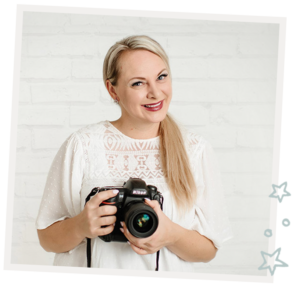
I'm
Lisa DiGeso
I’m on a mission to create uplifting online experiences for photographers ready to elevate their art, their business and their mindset.(...and have fun along the way!)




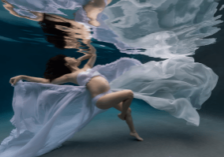

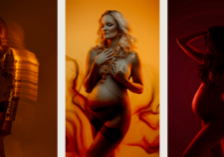



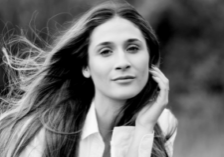


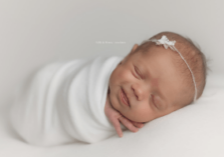

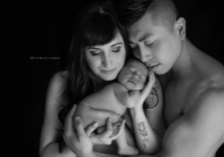
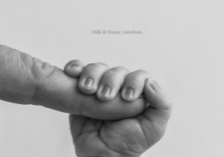
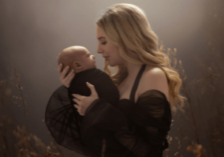
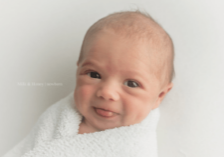





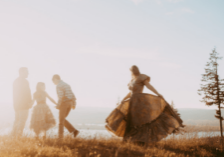
[…] We, as caregivers, hold a special role. We get to pamper your little ones in luxury. This makes the childcare experience better with creativity. It might seem hard to provide premium childcare essentials. But seeing childcare as a creative journey makes it both rewarding and fulfilling.13 […]